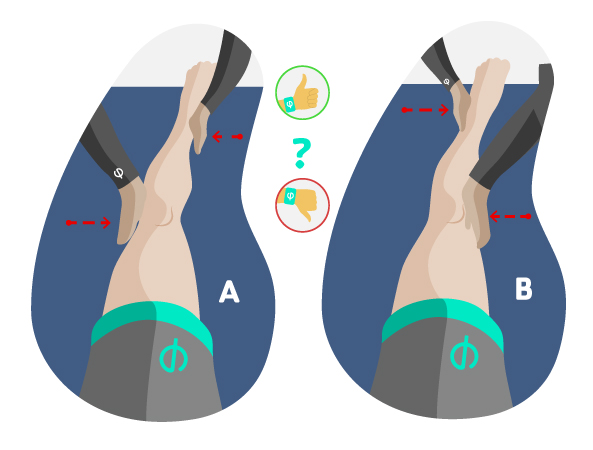
Forced valgus and forced varus test for internal and external lateral ligament
These tests are used to check the degree of instability of the lateral structures of the knee such as the internal lateral ligament (ILL) with the forced valgus test and the external lateral ligament (ELL), with the forced varus test.
- Required material: Una camilla de fisioterapia. Si la prueba se realiza en el suelo, necesitamos disponer de una colchoneta o esterilla.
- Procedure:
- A) Forced valgus test (ILL): The subject must be lying supine (face up) and the assessor perpendicular to the knee to be examined. One hand is placed on the lateral aspect of the knee at the level of the femoral condyle and the superior tibioperoneal joint. The other hand is placed at the level of the internal malleolus (Illustration A). From this position, an external rotation is performed at knee level and an inward force (valgus) is applied with the knee in 30° of flexion.
- B) Forced Varus Test (ELL): The subject must be lying supine (face up), while the evaluator must remain in a semi-sitting position between both lower limbs. One hand should be placed on the inside of the knee over the internal femoral condyle and the other hand should grasp the leg at the level of the lateral malleolus (Illustration B). An outward force (varus) is applied to the knee in 30° flexion.
- Assessment: The test is considered abnormal or positive when joint yawning or increased joint space in the lateral (forced varus) or internal (forced valgus) compartment accompanied by pain is evident, indicating LLE or LLI involvement, respectively. Otherwise, the test is considered normal or negative.
- Remarks: The possibility of damage to other structures adjacent to the lateral or internal compartment of the knee should be assessed.
Take this test and 139 more in our App